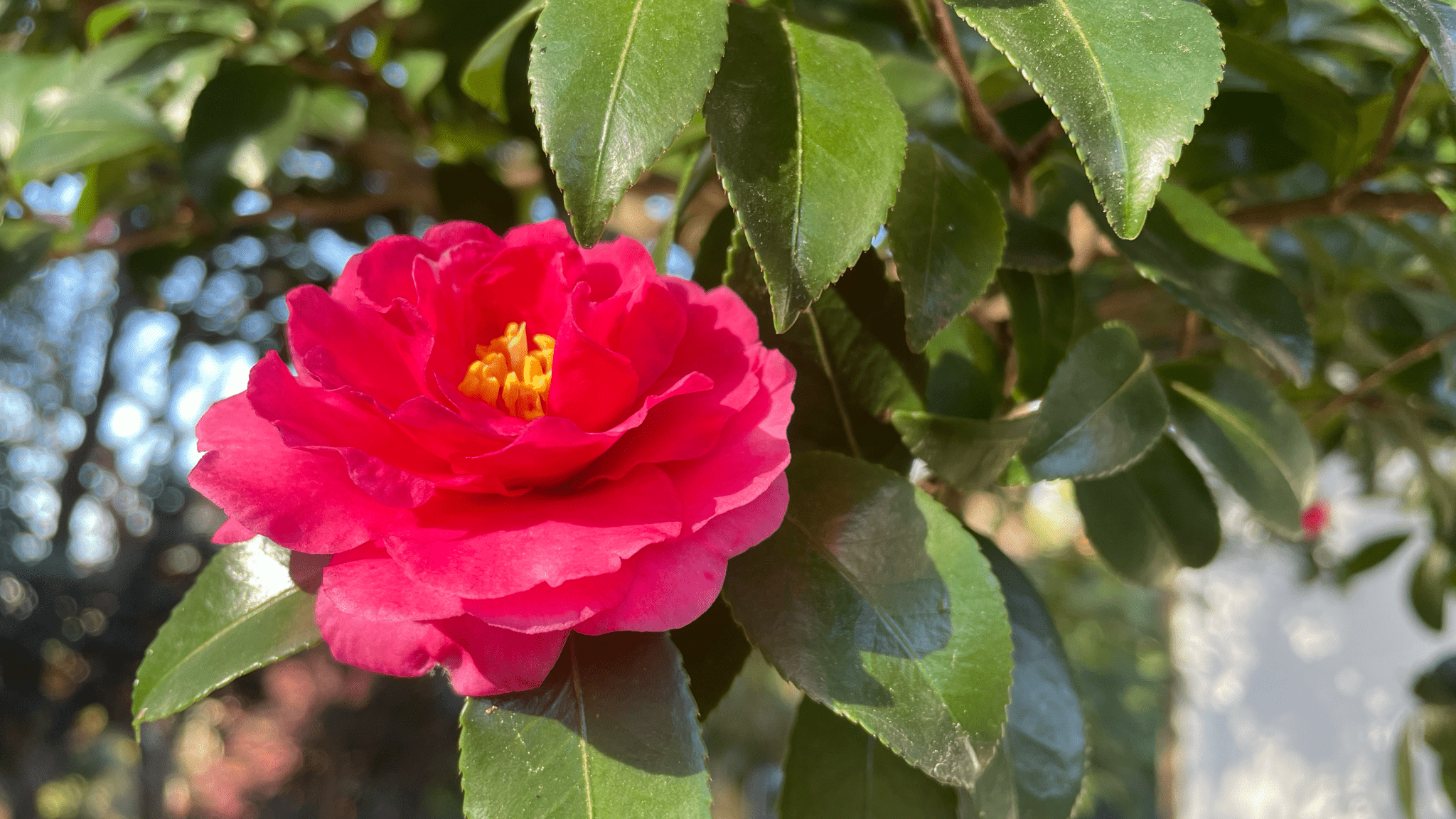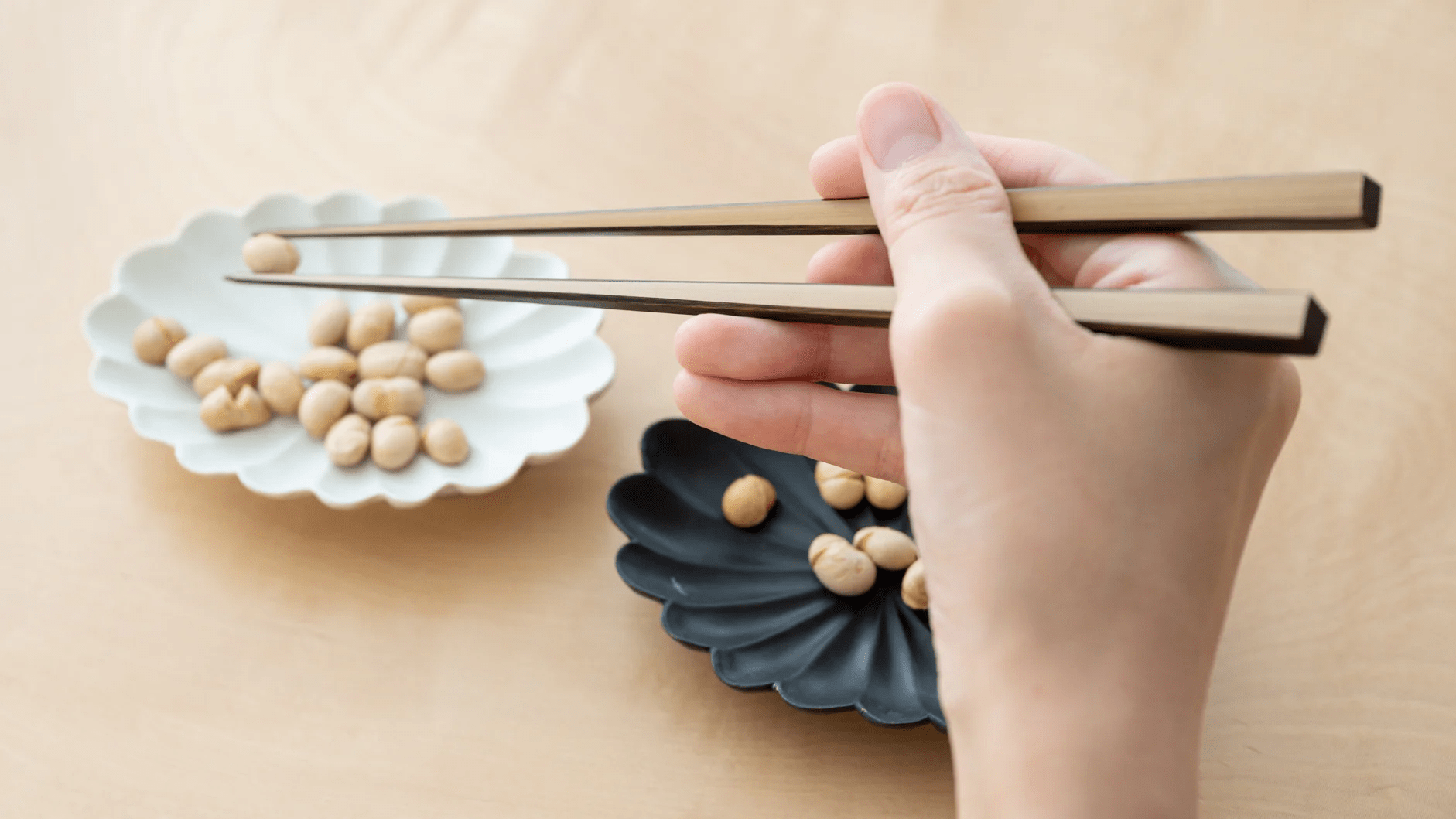
Bloom to Beauty: How Camellias Have Been Loved in Japan
Written by Team MUSUBI
Amidst evergreen, glossy leaves, camellias paint dashes of color in the cold with their refined hues and stylish forms. Known as tsubaki in Japan, these blooms, with their timeless charm, have captivated hearts for centuries.
Join us on a journey through time to explore how the camellia has blossomed from the refined gardens of ancient courts into a beloved source of beauty in Japan today.
tables of contents
Camellias at a Glance
The camellia flower boasts an effortlessly striking design. Its robust petals beautifully overlap and its center marked by vibrant yellow stamens connected by fine filaments, adds a distinctive charm. This blend of simplicity and elegance makes the camellia a charming and recognizable motif in arts and crafts, retaining its unique beauty even in stylized forms.
An Icon of Artistry
The oldest mention of camellias goes as far back as the Nihon Shoki (Chronicles of Japan), the second oldest book on Japanese history compiled in 720 CE, where the strength and resilience of the camellia are celebrated.
As the camellia continued to captivate hearts of the noble class, its presence in arts and crafts flourished during the Edo period (1603 CE – 1867 CE). Tokugawa Hidetada, the second shogun, was known for his deep appreciation of the arts and played a pivotal role in elevating the camellia's status as an artistic motif.
Works of prominent artists like Utagawa Hiroshige, whose woodblock prints featured camellias in various compositions, ranged from serene landscapes to vibrant depictions of daily life.

Ceramic artists also fell in love with the grace of camellias.
A rare find of Imari ware showcases the refinement of camellias in a ceramic plate from the 17th century.

The Camellia in Chado
In chado, the way of Japanese tea, the arrival of November ushers in the ro season, where an iron pot in a traditional sunken hearth is used to serve hot water. Celebrated for its unpretentious beauty, the camellia becomes the quintessential flower for tea ceremonies during this season. The esteemed tea master Sen no Rikyu (1522–1591) is notably remembered for his preference of white camellias.
Every element carries meaning in chado and a single camellia arranged in a vase honoring its natural orientation transcends mere decoration. The flower echoes the subtle yet profound transformations within a tea room.
The camellia motif extends beyond its natural form, adorning matcha tea bowls and natsume tea containers, further enriching the aesthetic of a tea ceremony. As guests gather around the inviting warmth of the hearth, the camellia serves as a gentle reminder of nature's transient beauty.
Beauty Beyond the Bloom

Produced mainly from the seeds of yabu-tsubaki, "wild camellia japonica," this oil continues to be a favorite in hair care products and has found its way into organic cosmetics as well. Camellia oil is renowned for its:
- Moisturizing properties: Abundant in oleic acid, offering deep hydration.
- Antibacterial qualities: With saponin, effectively helps prevent acne.
- Sebum regulation: Palmitic acid maintains a healthy sebum balance.
- Skin barrier repair: Linoleic acid helps repair and protect the skin from dryness.

Even after a millennium, the multifaceted benefits of camellia oil continue to make it a cherished beauty secret.
Celebrated for its unassuming elegance and seen as a symbol of good fortune for its evergreen nature, the camellia is a flower that embodies Japan's cultural values. Whether admiring its blooms or enjoying matcha in a camellia-adorned bowl, this flower offers a glimpse into Japanese aesthetics. Discovering the splendor of camellias can be a pleasant addition to your exploration of Japan.
Enjoy the beauty of camellias with pieces from our Camellia Collection.








Leave a comment
This site is protected by hCaptcha and the hCaptcha Privacy Policy and Terms of Service apply.